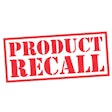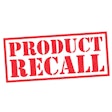
Everyone involved in pet food production, from ingredient suppliers to manufacturers, must ensure full compliance with the latest safety regulations and good practices, making pet food safety a complex undertaking.
A strong pet food safety compliance plan is built on thorough ongoing risk assessments and rigorous quality control processes that ensure high standards for pet products are consistently met. This includes keeping an eye on your suppliers.
“The beauty of supplier audits is that you can put your eyes on the process and identify potential risks that you cannot identify otherwise,” said Jarrod Kersey, vice president of food safety & quality assurance at Alphia. “We’re all in this together – to nourish and protect pets – and by visiting supplier sites, you can learn from one another.”
Ingredient testing is also important. “Ingredient testing not only helps identify potential contaminants, but it also helps create risk profiles and identifies focus areas so you can allocate resources appropriately,” said Kersey.
Why employees are key to pet food compliance
Given the complexity and the number of people involved, human error is a major challenge in maintaining compliance, said Kersey.
“When it comes to preventing recalls and producing the best high-quality products for pets, it is important to create a quality culture that enables people to do the right thing and bring their best selves to work every day,” he noted.
“Monitoring your preventive controls and ensuring no cross-contamination is fundamental,” Kersey added. “But it goes beyond simple policies and procedures. Your foundation is your people – because people run your quality and food safety programs – and from there, it really is blocking and tackling. Sanitation, pest management and maintenance must be properly maintained as well as an on-going educational process.”
Ongoing training, staying updated on regulations, and maintaining communication with business partners are essential to minimizing compliance risks and ensuring pet food safety.


















